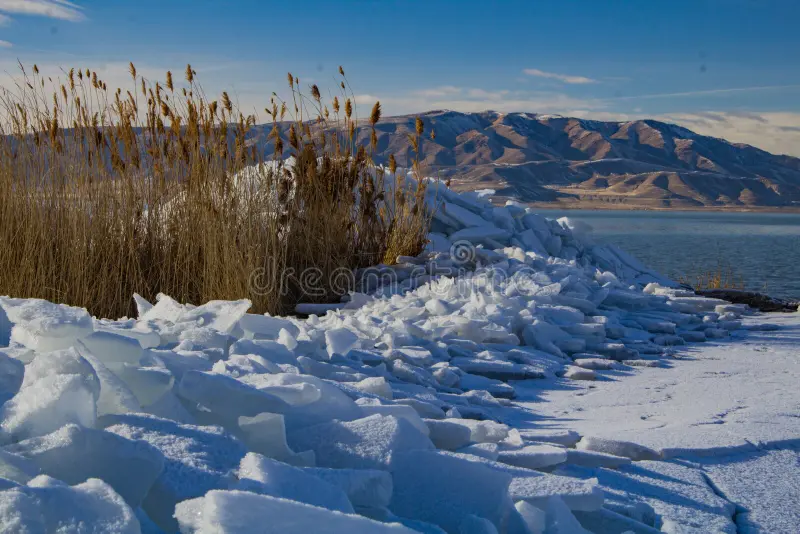Drifting sheets of ice, also known as sea ice or ice floes, are fascinating and dynamic elements of the Earth’s polar regions. These vast, floating sheets of frozen seawater not only shape the landscapes of the Arctic and Antarctic but also play a crucial role in the global climate system, marine ecosystems, and human activities. As the climate changes and the polar regions warm, understanding the behavior and significance of drifting sheets of ice becomes increasingly important. This article explores the formation, movement, and impact of drifting sheets of ice, shedding light on their importance to our planet and the challenges they face.
Formation and Characteristics of Sea Ice
Sea ice forms in the polar regions when the surface layer of the ocean cools and freezes. This process typically begins in the autumn and continues throughout the winter, reaching its maximum extent in late winter or early spring. The formation of sea ice is influenced by various factors, including air temperature, ocean currents, and wind patterns.
Sea ice can be categorized into two main types: fast ice and drift ice. Fast ice is anchored to the coastline or the ocean floor and does not move with the currents or winds. In contrast, drift ice, or floating sea ice, is not anchored and can move freely with the ocean currents and winds. Drift ice can range from small chunks called ice floes to large sheets that cover vast areas of the ocean surface.
One of the most striking features of drifting sheets of ice is their dynamic nature. These ice sheets are constantly changing in size, shape, and position, influenced by the complex interactions between the atmosphere, ocean, and land. The movement of drift ice is a result of the combined effects of wind, ocean currents, and the Earth’s rotation. This movement can vary greatly, from slow, gradual drifts to rapid, chaotic shifts that can pose significant challenges for navigation and scientific research.
The Role of Drifting Ice Sheets in the Climate System
Drifting sheets of ice play a crucial role in the Earth’s climate system. One of their most significant contributions is their ability to reflect sunlight, a property known as the albedo effect. Because sea ice is white and reflective, it bounces a large portion of the sun’s energy back into space, helping to regulate the planet’s temperature. When sea ice melts and exposes the darker ocean surface, more sunlight is absorbed, leading to further warming and ice melt. This feedback loop is a key factor in the warming of the polar regions and the acceleration of climate change.
In addition to their role in regulating temperature, drifting sheets of ice also influence global ocean circulation. As sea ice forms, it expels salt into the surrounding water, increasing its density and causing it to sink. This process, known as brine rejection, contributes to the formation of deep ocean currents that are part of the global ocean conveyor belt. These currents play a vital role in distributing heat and nutrients around the world’s oceans, influencing weather patterns and marine ecosystems.
Impact on Marine Ecosystems
Drifting sheets of ice provide a unique habitat for a variety of marine organisms, from microscopic algae to large mammals like polar bears and seals. The underside of sea ice is often covered in a layer of algae, which serves as a primary food source for small marine animals such as krill and copepods. These organisms, in turn, support larger animals, creating a complex and interconnected food web that is essential to the health of the polar ecosystems.
Sea ice also provides critical breeding and resting grounds for several species of seals, which rely on the ice for protection from predators and access to food sources. Polar bears, one of the most iconic inhabitants of the Arctic, depend on sea ice as a platform for hunting seals. As the ice retreats and becomes more fragmented, these animals face increasing challenges in finding food and maintaining their populations.
Human Activities and Challenges
Drifting sheets of ice have both positive and negative impacts on human activities in the polar regions. On one hand, the presence of sea ice can create opportunities for shipping, tourism, and resource exploration by providing stable platforms for transportation and access to remote areas. On the other hand, the movement and unpredictability of drift ice pose significant risks to navigation and infrastructure.
The melting of sea ice due to climate change is opening up new shipping routes, such as the Northwest Passage and the Northern Sea Route, which could significantly reduce travel time and costs for international shipping. However, these routes are also fraught with challenges, including the potential for ice collisions, environmental hazards, and the need for specialized ships and equipment.
Conclusion
Drifting sheets of ice are a vital and dynamic component of the Earth’s polar regions, influencing the climate, marine ecosystems, and human activities. As the impacts of climate change become more pronounced, understanding the behavior and significance of these ice sheets is more important than ever. By studying and monitoring drifting sheets of ice, scientists can gain valuable insights into the complex interactions between the ocean, atmosphere, and land, helping to inform efforts to protect and preserve these fragile and essential ecosystems for future generations.
